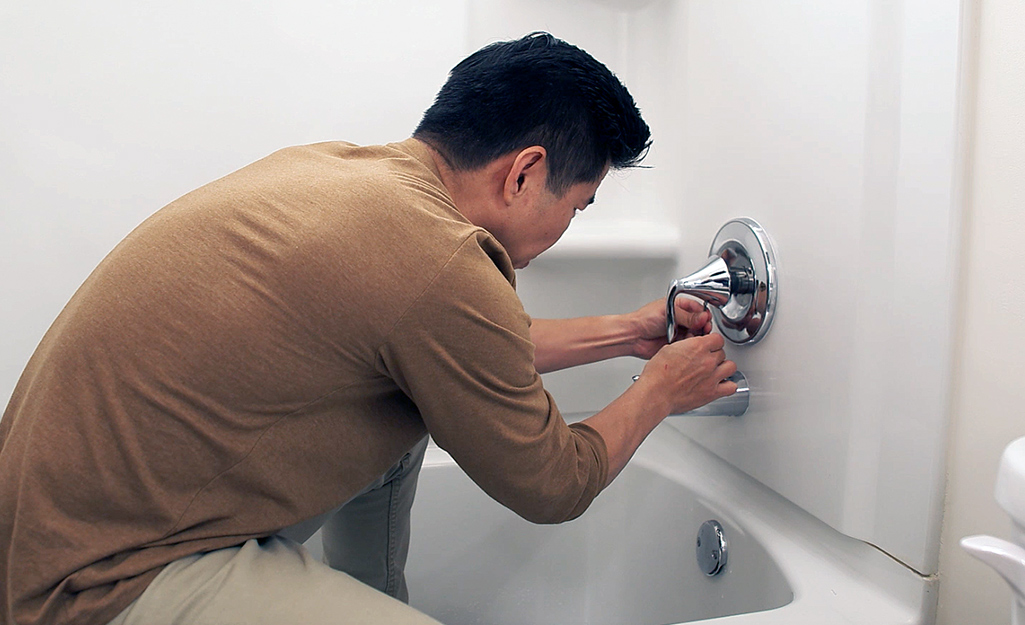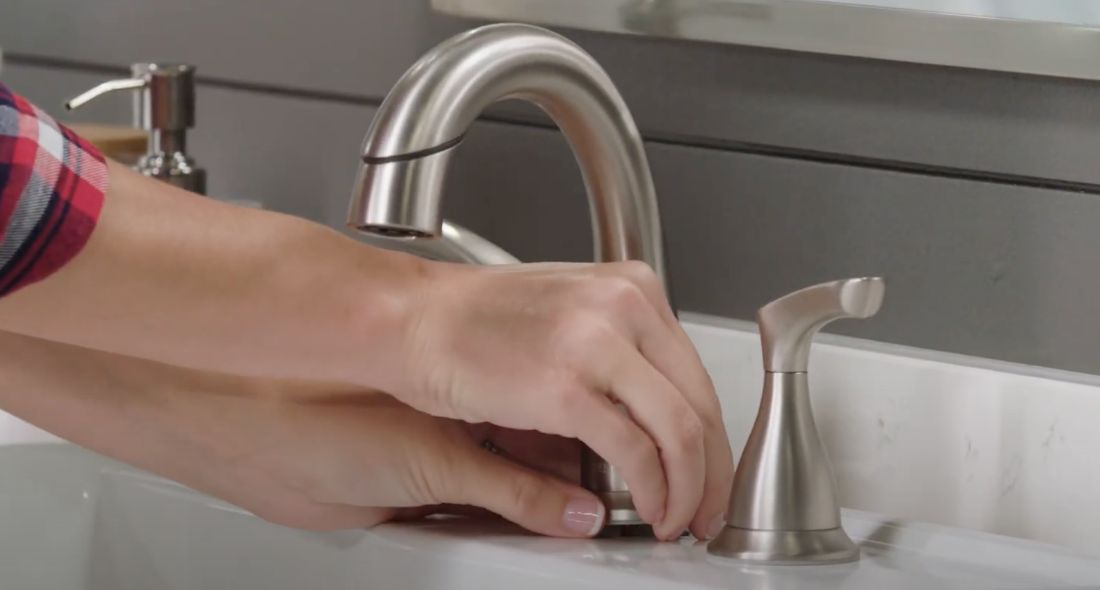Factors Why It's Vital to Mend a Faulty Faucet
Factors Why It's Vital to Mend a Faulty Faucet
Blog Article
What are your thoughts about What Causes Leaky Faucets & How To Fix Them?

Leaking faucets might look like a small hassle, but their effect surpasses just the inconvenience of the audio. From drainage to incurring unneeded monetary prices and health and wellness dangers, neglecting a trickling tap can bring about numerous effects. In this article, we'll delve into why it's crucial to resolve this usual home issue promptly and properly.
Wastefulness of Water
Environmental Impact
Trickling taps contribute significantly to water wastefulness. According to the Environmental Protection Agency (EPA), a single tap dripping at one drip per secondly can squander greater than 3,000 gallons of water annually. This not only pressures water resources yet likewise influences ecological communities and wildlife dependent on them.
Financial Costs
Increased Water Bills
Past the environmental influence, leaking taps can inflate water expenses considerably. The built up waste with time converts into higher energy expenditures, which could have been stayed clear of with timely repair services.
Potential Building Damage
Furthermore, extended trickling can lead to damage to fixtures and surfaces surrounding the tap. Water buildup can create discoloration, corrosion, and even structural problems if left ignored, resulting in extra fixing costs.
Health Issues
Mold And Mildew and Mildew Growth
The consistent visibility of dampness from a trickling faucet develops an ideal setting for mold and mold development. These fungis not only endanger indoor air high quality however likewise present wellness risks, particularly for people with respiratory system problems or allergic reactions.
Waterborne Conditions
Stagnant water in dripping taps can end up being a breeding ground for microorganisms and various other microorganisms, boosting the threat of waterborne conditions. Impurities such as Legionella bacteria prosper in stationary water, possibly resulting in severe ailments when ingested or inhaled.
DIY vs. Specialist Repair
Advantages and disadvantages of DIY Repair Service
While some might attempt to repair a leaking tap themselves, do it yourself repairs come with their very own collection of obstacles. Without correct expertise and tools, DIY attempts can exacerbate the issue or result in insufficient fixings, lengthening the trouble.
Advantages of Employing a Professional Plumber
Hiring a specialist plumber makes sure that the underlying reason for the dripping tap is attended to efficiently. Plumbers have the knowledge and equipment to identify and repair tap problems successfully, saving time and decreasing the danger of more damage.
Step-by-Step Overview to Fixing a Dripping Faucet
Devices Required
Before trying to repair a trickling tap, gather the necessary devices, including an adjustable wrench, screwdrivers, replacement components (such as washers or cartridges), and plumber's tape.
Typical Faucet Issues and Their Solutions
Determine the kind of faucet and the specific problem causing the drip. Typical problems consist of worn-out washers, corroded valve seats, or defective O-rings. Refer to manufacturer instructions or on-line tutorials for detailed support on repair work.
Safety nets
Normal Maintenance Tips
To avoid trickling faucets, carry out regular upkeep such as cleansing aerators, examining for leaks, and changing worn-out components immediately. Additionally, think about installing water-saving tools or updating to a lot more efficient components.
Significance of Prompt Services
Addressing leaking faucets as quickly as they're seen prevents further water wastage and prospective damage, eventually conserving both water and cash over time.
Effect On Home Value
Assumption of Well-Maintained Property
Preserving a home in good condition, consisting of attending to maintenance issues like dripping taps, improves its regarded value and worth among prospective customers or tenants.
Influence on Resale Value
Properties with well-kept plumbing components, consisting of taps, command greater resale values in the real estate market. Dealing with leaking taps can add to a favorable impact during residential property examinations and arrangements.
Ecological Responsibility
Private Contribution to Preservation
Taking responsibility for fixing dripping taps lines up with wider efforts towards water preservation and environmental sustainability. Every individual's activities collectively make a significant influence on protecting precious sources.
Sustainable Living Practices
By focusing on prompt fixings and adopting water-saving routines, individuals add to lasting living methods that profit both present and future generations.
Final thought
Addressing a leaking tap goes beyond simple convenience; it's a necessary step towards preserving water, reducing monetary prices, and safeguarding health and home. Whether through do it yourself repair work or specialist support, acting to deal with leaking taps is a little yet impactful means to promote accountable stewardship of resources and contribute to a much healthier, much more lasting future.
How to Fix a Leaky Faucet: Step-by-Step Repair Guide
A leaky faucet may seem like a simple annoyance, but if it's not fixed promptly, that leak could cost hundreds to potentially thousands. From water damage to mold, mildew, and high water bills, even a tiny leak can be catastrophic if left unattended. Damage like this can even affect the overall value of your home, so it's important to take the right approach for leaky faucet repair. You may need the help of a plumber in some cases, but we've got a few tips you can try on how to fix a leaky faucet before calling the pros.
Four Faucet Types
When you're learning how to fix a leaky faucet, the first step is knowing what kind of faucet you're working with! There are four common types.
Cartridge Faucets
Cartridge faucets come in one- or two-handled varieties. In one-handled cartridge faucets, hot and cold water combines in a single cartridge. In the two-handled versions, hot and cold water are controlled separately and mixed in the faucet.
Ball Faucets
Ball faucets have a single lever you push up and down to adjust the pressure and rotate to change the temperature. A slotted metal ball controls the amount of water allowed into the spout.
Compression Washer Faucets
They're the oldest type of faucet, but they're still used in many homes — especially older ones. Compression faucets have two separate handles that, when turned, raise or lower the washer that seals a water valve. This valve stops water from flowing through the faucet when it is turned off.
Disc Faucets
Disc faucets rarely need to be repaired due to their maintenance-free design. The water flow is controlled by two discs — the upper one raises and lowers against a fixed lower disc, creating a watertight seal. If your disc faucet starts leaking, you may need to replace the seals or clean residue buildup from the inlets.
Fixing a Leaky Faucet
Step 1: Turn Off the Water
Whether you're learning how to fix a leaky bathtub faucet or how to fix a leaky kitchen faucet, always turn off the water supply to your working area when you're fixing a leak. The last thing you want is a flood added to your list of things to fix.
Look for the shutoff valves below your sink or around the tub and turn them clockwise to stop the water flow. If your faucet doesn't have shutoff valves, you may need to turn off the water for the whole house. Check to make sure it's off by turning the faucet on. If nothing comes out, you're ready to start the repair.
Step 2: Take Apart the Faucet
How you disassemble your faucet depends on the type of fixture you have. You can use a flathead screwdriver to remove the caps on top of the handle or handles for cartridge and compression faucets. Inside, you should see handle screws. Unscrew these with a screwdriver to remove the handle.
Disc- and ball-style faucets will typically have an inlet screw near the handle, and removing that will reveal the interior of the faucet.
Detach the Valve Stem
For cartridge- and compression-style faucets, you'll see the inner valve stem or cartridge once you remove the faucet handles. If you have a compression faucet, unscrew the brass valve stem. If you have a cartridge faucet, pull out the cartridge. If your cartridge has been in place for a while, it may require some tools or extra force to remove it due to mineral deposits.
Examine and Replace Parts
Once you've removed the parts, check them out to confirm what needs to be replaced. You may see corroded rubber washers, O-rings, stems, or cartridges. On a ball-style faucet, check the seats and springs for damage.
If you need to repair a leaky disc faucet, check the inlet and seals on the lower disc.
Once you determine what parts must be replaced, visit your local hardware store. Bring the damaged parts with you to ensure you can purchase the correct components to replace them.
Clean Valves and Faucet Cavity
If you've removed a stem or cartridge, you may notice mineral buildup in the faucet's threads. Use white vinegar to clean the valve seat by soaking it for a few minutes, then scrub it away with a soft toothbrush and rinse with warm water. You can also clean the interior of the faucet in the same way.
Reassemble the Faucet
Once your faucet is cleaned and the required parts have been replaced, it's time to reassemble it. Put the pieces back together and slowly turn the water supply back on. Doing this slowly is crucial because too much initial water pressure can damage the new hardware you've just installed.
https://homewarranty.firstam.com/blog/how-to-fix-leaky-faucet

I was introduced to that write-up on Leaky Faucets: Why They Happen & What to Do About Them through someone on a different web blog. If you please take the time to distribute this entry if you enjoyed it. I thank you for your readership.
Report this page